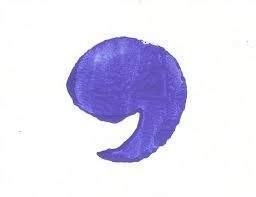Punctuation Rules: The Use of Apostrophes
 Apostrophes are probably the most misused punctuation marks in written English. When used correctly, they enhance language by providing extra information in a sentence to better convey your meaning. When not used correctly, they can muddle the meaning and be very irritating.
Apostrophes are probably the most misused punctuation marks in written English. When used correctly, they enhance language by providing extra information in a sentence to better convey your meaning. When not used correctly, they can muddle the meaning and be very irritating.
The two ways apostrophes are used
There are two primary situations when apostrophes are used. The first is to denote ownership and the second to indicate an abbreviation.
Ownership
When two words are linked through one having some sort of ownership over another the apostrophe indicates this.
The girl’s cat killed an alarming number of small native birds.
The girl owns a cat. When we refer to her cat, we use an apostrophe to show this.
Incidentally, cat skins make great hats. To wit: The environmental warrior’s hat was made entirely of cat skins. (Note the apostrophe.)
Using Apostrophes with Singular and Plural Words
When one person owns something, the apostrophe comes before the ‘s’. When more than one person owns something, the apostrophe comes after the ‘s’.
[wpcol_1half id=”” class=”” style=””]The girl’s cat bit the postman.
One girl had a cat, to the postman’s regret.
The girls’ cat bit the postman.
The cat was owned by more than one girl – perhaps they were sisters with a perverse dislike of male mail personnel.
It gets more complicated if the word doing the owning is already plural. Then the apostrophe comes before the ‘s’ again.
The crowd’s wrath was tangible.
We know a crowd is more than one person, but as it is a collective term it is treated as a singular. After all, there is only one crowd.
The people’s will was expressed to Jeffrey, but to Jeffrey’s ultimate demise, he didn’t listen.
The ‘will’ belongs to the people, the ‘ultimate demise’ belongs to Jeffrey.
Words that already end in an ‘s’
This seems a bit tricky and I suspect that there a multiple correct options here. My main reference (see Footer) gives the following advice.
Singular words that end in s, have an apostrophe s added.
Robert Burns’s poems, Charles Dickens’s stories.
Plural nouns that already end in ‘s’ have just the apostrophe after the s.
The horse riders’ mounts, the Smiths’ garden.
However, there are too many exceptions to go into in this brief overview.
Abbreviations (Contractions)
When two words are condensed into one, and some letters are dropped out, we use an apostrophe to illustrate that this has happened.
Don’t we?
Do not we?
I shouldn’t leave now, as the bailiff is waiting outside for me.
I should not leave now, as the consequences could be ugly.
Your and You’re
A really ugly incorrect contraction is currently taking over the world. This is the use of your when the user really means you’re.
If you’re going to wear a tutu Barry, I’ll wear my snakeskin tights.
If you are going to wear a tutu Barry, you’ll be going to church on your own.
Your simply means something that belongs to you. It’s a completely different word.
If your snakeskin tights start sagging at the funeral Walter, you’re on your own.
We wouldn’t say “If you are snakeskin tights…”.
The snakeskin tights belong to Walter, so the message for you Walter, if they let go in the gusset, is that you are on your own.
Exceptions
The main exceptions are its and it’s. It’s means it is. For possession use its.
It’s a rather hot day today.
It is a rather hot day today.
The dog chased its tail
The tail belongs to the dog but this is an exception so no apostrophe. You wouldn’t say “the dog chased it is tail” would you?
(TALK English Schools thanks the folks at www.thewallington.net, who make grammar lots of fun. They don’t seem to love cats, however …..




















